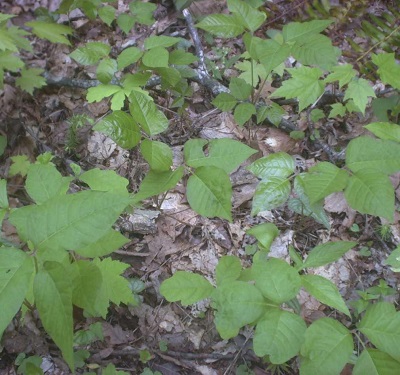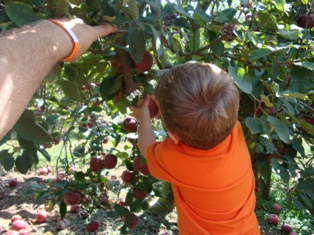
Looking for How to Recognize Poison Ivy in 2025? Scroll down this page and follow the links. And if you bring home some fruit or vegetables and want to can, freeze, make jam, salsa or pickles, see this page for simple, reliable, illustrated canning, freezing or preserving directions. There are plenty of other related resources, click on the resources dropdown above. If you are having a hard time finding canning lids, I've used these, and they're a great price & ship in 2 days.
If you have questions or feedback, please let me know! There are affiliate links on this page. Read our disclosure policy to learn more.
How to Recognize Poison Ivy
How to Recognize Poison IvyIf you want to avoid getting a bad case of poison ivy, it helps to see it! The photo below is filled with it! Characteristics:
If you do touch it (or touch a dog that has just been rolling in it) wash all exposed skin as soon as possible (within an hour) with strong soap (like laundry detergent, thoroughly). It is an allergen, so removing it quickly is key. There are blocking creams you can put on, before you go into the woods. Larger drugs stores sell them. |
 |
| Note 90% of the plants in this photo are poison ivy, there are a two small maple tree seedlings, in the top left corner and towards the top right. I assume you can figure out the obvious differences. |
What to do if you get poison ivy
If you get some of the poison ivy plant oil on you and don't realize it and wash it off, you may get a rash. You may not; remember, it is an allergen, and some people just aren't allergic to it. If you start to itch and see red bumps, like small bug bits, but raised and hard, and many of them clustered together, that is probably it.
First wash the affected area with a strong drying soap to remove as much of the remaining plant oil as possible. Then apply a drying cream, like Calamine lotion. You may also want to use an anti-itch cream, like Lanacaine. And above all, do NOT scratch it! That spreads any remaining oil, and if you create a cut, may open your skin to an infection.
The contents of the pustules do not spread poison ivy, though.
And if you haven't had it before call your doctor just to be sure you haven't misdiagnosed yourself!
Fruit and Vegetable Picking Tips
[General picking tips and a guide to each fruit and vegetable] [How
much do I need to pick?
(Yields - how much raw makes how much cooked or frozen)] [Selecting
the right varieties to pick] [All
about apple varieties - which to pick and why!] [Picking tips for Vegetables]
[ Strawberry picking tips]
[ Blueberries picking tips]

Illustrated Canning, Freezing, Jam Instructions and Recipes
[ Easy Home Canning Directions] [FAQs - Answers to common questions and problems] [Recommended books about home canning, jam making, drying and preserving!] [Free canning publications to download and print]
Looking for canning equipment and supplies?
Water bath canner with a jar rack
Pressure canners for gas, electric and induction stoves: Presto 23Qt or T-fal 22Qt
Canning scoop (this one is PERFECT)
Ball Blue book (most recent version)
Jars: 8oz canning jars for jams
Find Other types of farms:
Farm markets and roadside stands
Road trips and camping resources
Local Honey, apiaries, beekeepers
Consumer fraud and scams information
Home canning supplies at the best prices on the internet!
Maple Syrup Farms, sugarworks, maple syrup festivals
Environmental information and resources
Farms For Your Event for birthday parties, weddings, receptions, business meetings, retreats, etc.
Festivals - local fruit and vegetable festivals
Get the
most recent version of
the Ball Blue Book
With this Presto 23 quart pressure canner and pressure cooker, you can "can" everything, fruits, vegetables, jams, jellies, salsa, applesauce, pickles, even meats, soups, stews. Model 01781

You can make jams, jellies, can fruit, applesauce, salsa and pickles with water bath canners, like this Granite Ware 12-Piece Canner Kit, Jar Rack, Blancher, Colander and 5 piece Canning Tool Set

